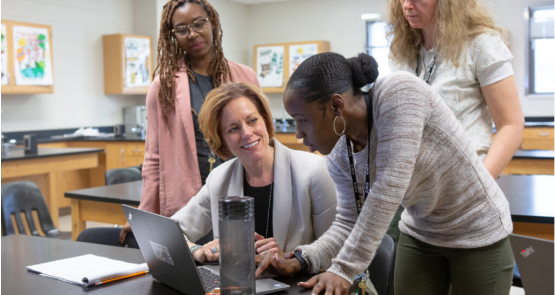Contact: Kent Fischer, [email protected]
PARIS – The Reboot Foundation today released results from a new study that tested the effects of using pencil and paper on online math homework. The study, The Benefits of Using Paper and Pencil in Math, was conducted by Maine high school teacher Bill Hinkley and supported by the Reboot Foundation, which works to advance critical thinking education and research. It was carried out using ASSISTments, a freely available online math homework tool.
The results were striking. Students prompted to use pencil and paper outperformed their peers who used only digital tools.
“This study shows that we need to exercise caution and care when introducing technology into classrooms,” said Reboot Foundation President Helen Lee Bouygues. “Ed tech can be useful, especially in challenging and uncertain times like these, but we should take steps to ensure it doesn’t interfere with tried and true methods that promote reflective and critical thinking.”
In the study, one group of students watched a short, embedded video reminding them to use pencil and paper to complete the problems. They were also given homework credit for turning in the hard copy of their work.
Meanwhile, a control group was simply instructed to use the platform as usual and submit their answers online. Each group’s performance on the relevant problem type was tested before and after the homework session.
The result: students in the intervention group did about 13 points better than those in the control group.
While tech tools can provide students with numerous benefits — providing immediate feedback, tracking individual progress, and tailoring work to student needs, for example — doing math online can sometimes make it harder to engage deeply with problems. Hinkley noticed that his students tend to rely more on guess-work and calculators, or attempt to type out work that could be done on paper more easily and clearly.
The authors speculate that the effects documented by the study are due in part to “metacognition,” or the practice of regulating one’s thinking. Using pencil and paper, students are better able to see what strategies they are using and, thus, better able to evaluate whether they are on the right track. Showing their work, in other words, makes students more reflective.
Pencil and paper can also help with “cognitive load.” With fewer distractions, it’s easier for students to focus, and they can keep relevant numbers and prior calculations close at hand, allowing them to focus attention on mathematical strategies and relationships.
While the study used a small sample size and thus fell just short of statistical significance, the results do suggest teachers should be mindful of the benefits working on paper can have. Hinkley plans to carry out more studies to help better understand those benefits.



